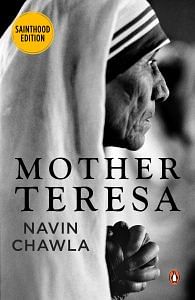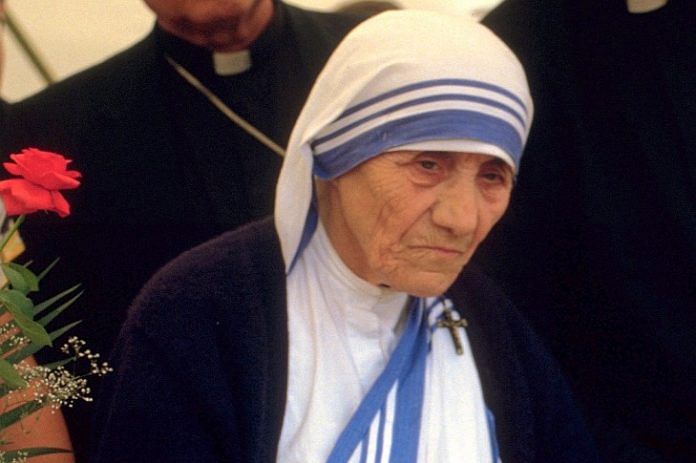What prevailed over all else was her faith, and with this alone Mother Teresa ploughed her lonely furrow.
Witness her life. She was only eighteen when she was convinced that her life’s vocation lay in her becoming a missionary in far-off India. Skopje, a city in the folds of the Balkans and then in Yoguslavia, where she was born on 26 August 1910, was so far removed from Bengal that, barring a few Yugoslav Jesuits who fired her young imagination, no one in the small Catholic community would even have known where India was. Yet the early seeds of her faith, determination and compassion, nurtured by her widowed mother, impelled her to leave her closely knit family for a faraway city, which she would grow to love so much that it would become indistinguishable from her own name. She lived and worked as a Loreto nun for close to twenty years before her true calling once again propelled her to find a way to the street, not as a laywoman but as continuing to be an ordained nun, a first-ever dispensation given to a nun by the rigid hierarchy of the Vatican. The 1940s were some of the most tumultuous years in India’s contemporary history.
Following the outbreak of the Second World War came the Great Bengal Famine, in which an estimated four million people died of starvation and disease. Then came the communal riots and massacres that accompanied the horrors of India’s partition in 1947. Into the dangerous streets of a huge city now stepped a thirty-eight-year-old nun, dressed not in any recognizable habit, but instead in a sari similar to what the municipal female sweepers wore. She had no companion, no helper,, and out of choice, no money. From a lifetime spent within the secure cloisters of a convent, she found herself stepping over a battleground of mutilated bodies and those who had succumbed to starvation. As she struggled to come to terms with the horrors that surrounded her, what prevailed over all else was her faith, and with this alone she ploughed her lonely furrow.
Also Read: Remembering Mother Teresa, the Kolkata saint, on her 108th birth anniversary
Confronted with disease, destitution and death all around her at a time when there were hardly any healthcare services to speak of, she did what was to become her hallmark. Finding a man dying in the street, she managed to carry him to a public hospital. The hospital refused admission precisely on the grounds that he was about to die. They would not waste a hospital bed on a life they said they could not save! Only when she sat before the hospital in protest did they relent. The man died a few hours later. It was at this point that she began her search for a place where she could take those people whom hospitals refused, where she could nurse them-she had some medical training- so that they could at least die being comforted and with some dignity. She begged various authorities, and finally an officer in the Calcutta Municipality gave her a pilgrims’ hall adjacent to the famous Hindu temple of Kalighat in south Kolkata. She requested the police and municipal authorities to bring to her all those people who were dying, but only such cases whom the hospitals refused to admit.
I have been so many times to this hospice at Kalighat that I understood why she had not set up the hospital that her critics had accused her of not doing. I knew that a hospital would tie down most of her Sisters to a single establishment and then who there would care for those who fell by the wayside? The infant abandoned on a street, the sick and elderly turned out of their homes often enough by their own families, the leprosy sufferers or AIDS patients that no one wanted to even go near-who would look after them? It is easy to criticize but how many of us actually do anything about the desperately poor we see on the streets? I have yet to see evidence that her most strident critics have ever done anything with their own hands to help alleviate misery or loneliness.
 This excerpt is from the book “Mother Teresa” by Navin Chawla. It was published by Penguin Books in 2003.
This excerpt is from the book “Mother Teresa” by Navin Chawla. It was published by Penguin Books in 2003.







What about the $50 million in donations that she kept and refused to give to the poor?
(THE MISSIONARY POSITION by Christopher Hitchens)
Or the secret baptisms of Muslims and Hindus? Read the book and you might not find the saint you think she was.
Ron, whee did you get the idea of secret baptisms of Muslims and Hindus? Or that she kept 50 million away from the poor? Go and live in a house of the Mother Theresa sisters and see for yourself the work they do for a week or a month; and then you will know if they are baptising anybody. Don’t be obtuse by reading a book by a man who was totally biased against her and wrote a book to justify his hate; read as many books on her as you can; and talk to people like Naveen who lived in close association with her and knew her from close quarters. There are thousands of other volunteers who have worked with her. Talk to them and then make a judgement for yourself. Don’t be like an unintelligent man who has his conclusions already but just does not know how to arrive at them. Peace!
We have a photograph of my wife checking Mother Teresa’s eyes; her sisters were always honoured guests at father in law’s eye clinic on Russell Street, Calcutta. When our daughter needed to be admitted to Villa Theresa High School in Bombay, the saintly lady sent a handwritten note to the Principal.